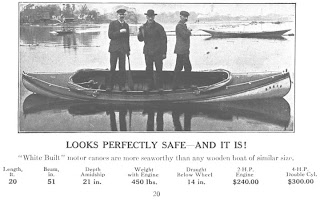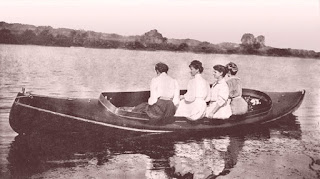 |
| World renowned Wetterlings Axes |
High quality, well-made hand tools hold a place of honour in
any craftsman’s toolbox! So when I moved from Sweden to North America in the
1980’s my toolbox contained a few tools I didn’t want to leave behind; a trusted
Wetterling sloyd axe, an old Hults Bruk camping axe, a Isaakki Jarvenpaa puukko
and a drawknife, tools I
still use almost every day in my canoe building business and around my home. A
couple of years ago I lost my old Wetterling. To replace it a friend gave me
his Gränsfors Bruks hunting axe. A wonderful present in itself, it has been
well used, but it was not exactly what I was missing. To make a long story
short, this led me to contact Wetterlings Axes in Storvik, Sweden and to carrying
their axes for sale in my canoe and outdoors gear store.
www.buckhorncanoes.com
S.A.Wetterlings
Wetterlings has been making hand forged axes for more than 130
years, making it the oldest axe maker still operating in Sweden. The company
was founded in early 1880 in the village of Bäckefors Bruk, by Sven Axel
Wetterling. In 1882 his brother, Otto Wetterling, returned home from the USA
where he had studied industrial axe manufacturing. To be closer to railroad
transportation and therefore easier access to raw materials the brothers moved
the company to Storvik in 1885. The brothers, there created a piece of
legendary Swedish industrial history, using the knowledge and experience of
Sven-Axel and the new ideas and technical knowledge of Otto.
With the death of Otto Wetterling in 1915, Sven Axel
Wetterling decided it was time to retire. He sold the company in 1917 to a
former competitor and old friend, Magnus Liljeblad. The factory was expanded and its machinery and
equipment were modernized.
 |
| Vintage Wetterlings Axe Labels |
In 1950 the ownership of the now world renowned company was
passed on to Gustav Jungefors, a nephew of the owner. The company had grown to
employ 40 workers and had also expanded into making their own axe shafts
through the purchase of Söderhamns Axe
Shaft Factory. During the postwar era, Wetterlings enjoyed a growing export,
and among others, Argentina and Brazil had become important new markets. In the
best year ever, Wetterlings produced 160 000 axes. Almost one third of the
production was made for Sandvik, which for many years had been an important
customer, but also Husqvarna and others purchased Wetterlings axes for re-sale
under their own brands.
The late 1970’s came with hard times for the world’s axe
makers. The chainsaw had already taken a good part of the market and with the
latest innovations in forest machinery such as harvesters and processors, the
axe had taken a definite backseat. Sweden had in the early 1900’s more than twenty
axe manufacturers. In 1966 there were only three left; Wetterlings, Gransfors
Bruk and Hults Bruk.
Today, it’s not commercial loggers using axes, its people
like you and me; homeowners, campers, woodworkers, hunters etc. To meet the
demands of this market segment, Wetterlings changed back towards old production
methods based on craftsmanship. A new assortment of axe models were developed
many based on old re-designed and improved models from the company’s early
years.
In 2007, Gabriel Brånby (former owner of Gransfors Bruk)
purchased Wetterlings and together with new CEO Julia Kalthof, restored this legendary
company back to its former glory.
 |
| Vintage hammer presses Forging in the power hammer |
For a casual observer and visitor to Wetterlings today, it
seems almost as if time has stood still. Wetterlings forges and shapes each axe
by hand using old hammer presses and tools, some almost 100 years old, followed
by hand finishing the final details on the traditional anvil. This is a task
that demands patience and time and is totally dependent on the skill of the
blacksmith.
 |
| Forging Finishing the final details by hand Axe heads Edge grinding |
The forge is still in Storvik, twenty kilometers west of
Sandviken, an area in Sweden where people since the time of the Vikings have
worked with iron. Today, ten people proudly continue the tradition of producing
Wetterlings world class axes.
 |
| Wetterlings Axe |
Hand forged traditional axes
made by Wetterlings, the oldest existing axe forge in Sweden. Made from high
grade Swedish steel, hardened and tempered to Rockwell 57 – 58. American
hickory handles. All axes supplied with leather sheaths.
An axe from Wetterlings is
made to last. With a little care, your axe could be passed on from one
generation to the next. With a Wetterlings you have not only an axe, but a
friend for life.
Isn’t it
time for you to get a Wetterlings axe?
Order online,
over the phone or purchase directly in our store;
Buckhorn Canoe Company
1887 Lakehurst
Road, Buckhorn, Ontario, K0L 1J0
1-705-657-2601






















































